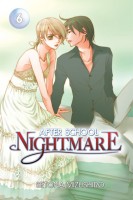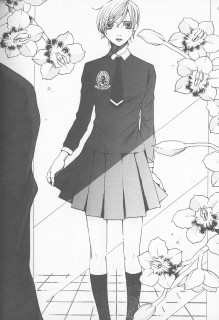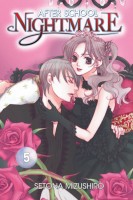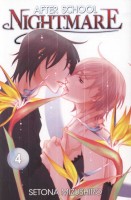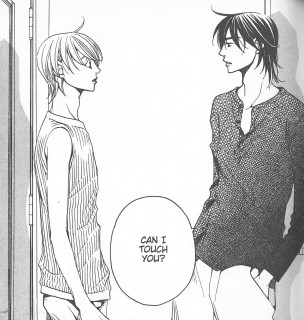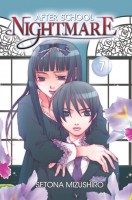 Creator: Setona Mizushiro
Creator: Setona Mizushiro
U.S. publisher: Go! Comi
ISBN: 9781933617626
Released: April 2008
Original release: 2007
After School Nightmare, and more specifically the first few volumes of the series, was my introduction to the manga of Setona Mizushiro. The beginning of the series left a strong impression on me, so I sought out more of her work released in English, namely X-Day and more recently Black Rose Alice. But for a very long time, I didn’t ready any further in After School Nightmare. The manga is a dark psychological drama with elements of the fantastic, which is a type of story that I tend to enjoy, but some of the series’ themes could occasionally hit uncomfortably close to home. I have since found the courage to read the rest of After School Nightmare and so far have continued to find the series to be both engrossing and disconcerting. After School Nightmare, Volume 7 was first published in Japan in 2007. The English-language edition, now out-of-print, was released by Go! Comi in 2008.
After rejecting Sou and after his breakup with Kureha, Mashiro now finds himself more alone than ever. The distance between himself and others is made even more painfully clear when the relationship between Kureha and Sou, once rivals in love, begins to deepen. At first they merely commiserate with each other, having both been hurt by Mashiro, but eventually they become very close. Meanwhile, Mashiro is struggling to come to terms with the confusion and turmoil of his feelings, and his identity, on his own. Physically, his body has both male and female characteristics, but for his entire life Mashiro has striven to be seen and accepted as a man. More recently, however, his desire to express himself as a girl has grown. One of the reasons that Mashiro refused to recognize his developing feelings for Sou, seeking refuge in his relationship with Kureha, was that he was trying to deny this feminine part of himself. However, that avenue of escape may no longer be an option for him.
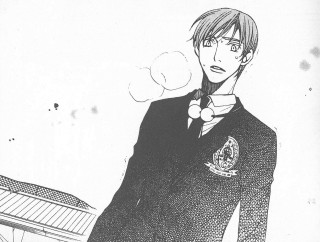 While Mashiro is the lead character in After School Nightmare and much of the manga’s focus in on his personal struggles and growth, both Kureha and Sou have major roles to play as well. After School Nightmare, Volume 7 reveals more about them and their unfortunate family circumstances than ever before. Surprisingly, Kureha actually returns home to visit her parents for a time, though she still harbors ill-feelings towards them due to the trauma she suffered in the past. The exact nature of the unpleasant ordeals that Sou has lived through and has never quite recovered from are exposed in the volume as well. Mizushiro isn’t afraid to go in some very dark directions with After School Nightmare. Many if not most of the characters are dealing with the lasting repercussions of abuse, whether it be mental, physical, emotional, sexual, or some combination of the four. Perhaps even more tragically, at times this maltreatment is even self-inflicted.
While Mashiro is the lead character in After School Nightmare and much of the manga’s focus in on his personal struggles and growth, both Kureha and Sou have major roles to play as well. After School Nightmare, Volume 7 reveals more about them and their unfortunate family circumstances than ever before. Surprisingly, Kureha actually returns home to visit her parents for a time, though she still harbors ill-feelings towards them due to the trauma she suffered in the past. The exact nature of the unpleasant ordeals that Sou has lived through and has never quite recovered from are exposed in the volume as well. Mizushiro isn’t afraid to go in some very dark directions with After School Nightmare. Many if not most of the characters are dealing with the lasting repercussions of abuse, whether it be mental, physical, emotional, sexual, or some combination of the four. Perhaps even more tragically, at times this maltreatment is even self-inflicted.
In addition to Sou and Kureha, there is another character whose backstory is specifically explored in After School Nightmare, Volume 7—Koichiro Kurosaki, Mashiro and Sou’s upperclassman from the kendo club. Throughout the series, Koichiro has been something of a cipher. He comes across as well-adjusted and mature, but also distant and reserved. Frequently Mashiro comes to him seeking advice and Koichiro, calm and collected, provides guidance seemingly without judgement. However, in the seventh volume, it is revealed that he, too, is struggling with his own family problems and personal issues. Koichiro’s very careful in how he presents himself, but his vaguely unsettling cool exterior is a cover for a much more troubled and darker personality. Because he has earned the respect and trust of others, Koichiro is in a position to inflict some truly significant harm should he choose or allow himself to do so. This sort of intense, psychological drama in After School Nightmare is part of what makes the series so chilling.

